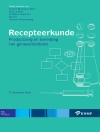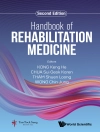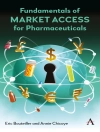This book provides a comprehensive overview on current histamine and histamine receptor research in context of human health and disease and reflect the multidisciplinary nature of the field. While the editors realize that it is almost impossible to cover the field completely within the constraints of a single HEP volume, nonetheless, all important aspects will be covered in one way or the other. An overarching introductory chapter will link the individual chapters and provide an overview on the field. This chapter will also link the book to the previous HEP volume on histamine receptors and the recent HEP volume on the pharmacology of itch. Great attention will be paid to complementation of existing literature while avoiding undue duplication. The book will cover new methods for analysis of histamine and histamine metabolites, development of methods for histamine receptor analysis, signal transduction, histamine release, regulation of immune cells by histamine, histamine metabolism and associated diseases, regulation of major organ systems by histamine and development of new drugs and experimental tools for the study of histamine receptors.
Содержание
Part 1: New Analytical tools.- Histamine and histamine receptors: State of the art.- Mass-spectrometric methods for the detection of histamine and histamine metabolites.- Fluorescent ligands and radioligands for the analysis of histamine receptors.- Molecular analysis of histamine receptors: Structural analysis of the histamine H1-receptor.- Molecular modelling approaches for the analysis of histamine receptors.- Cellular analysis of histamine receptors: Histamine release from human mast cells and basophils.- Histamine H2-receptor in blood cells: A suitable target for the treatment of acute myeloid leukemia.- Histamine H1-receptor-regulated gene expression and drug action of antihistamines.- Histamine metabolism and transport: Analysis of the role of histamine and genetically engineered mice in a human disease model.- Histamine clearance through polyspecific transporters in the brain.- Histamine decarboxylase deficiency as a cause for Tourette syndrome.- Histamine food poisoning.- Integrative role of histamine in major organ systems: Pharmacological implications: Regulation of the cardiovascular system by histamine.- Regulation of eating behavior by histamine.- Role of the histamine H3-receptor in the CNS.- Role of the histamine H4-receptor in bronchial asthma.- The histamine H4-receptor in pruritic skin disease.- Histamine in allergy and antihistamines.












